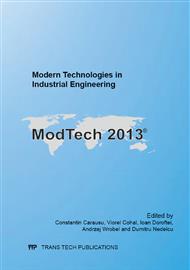p.739
p.745
p.751
p.757
p.763
p.769
p.775
p.780
p.786
Energy Review on a Maritime Energy Transfer System for Comercial Use
Abstract:
Despite the low energy and lower maintenance benefits of marine heat pump systems, little work has been undertaken in detailed analysis and simulation of such systems. This heat pump system is very attracting increasing research interests, since the system can be powered by thermal energy that can be provided by a renewable source: the difference of temperature between the ocean water layers.This paper focuses on the annual energy consumption and COP ( performance coefficent) of a marine heat pump system implemented for comercial use. This unconventional maritime systems of energy transfer would solve some of the pollution problems that arise from the use of conventional fuels . By using this system can make a pretty big energy savings in heating our homes and in preparation of hot water for domestic use.This energy consumption takes into account the heating and cooling needs of structure along different periods of time, such as winter and summer. Moreover, for each year period, we compared the heat pump efficiency simulated for our cost line with other tree tipes of heat pumps that are using diffrents primary agents. To highlight the performance of heat pump used for this study we coupled it with solar panels. The simulation, performed with TRNSYS (Transient Systems Simulation Program), was made for different working conditions simulating real conditions and temperature variations that occur in a year in the Black Sea coastal area.This experiment is intended to emphasize that marine energy potential that we have and also the advantages of using unconventional energy in relation to the use of classic fuels.This unconventional system of thermal energy conversion can be applied to both residential and commercial areas bringing an important benefit both people and the environment.
Info:
Periodical:
Pages:
763-768
Citation:
Online since:
November 2013
Authors:
Price:
Сopyright:
© 2014 Trans Tech Publications Ltd. All Rights Reserved
Share:
Citation:


